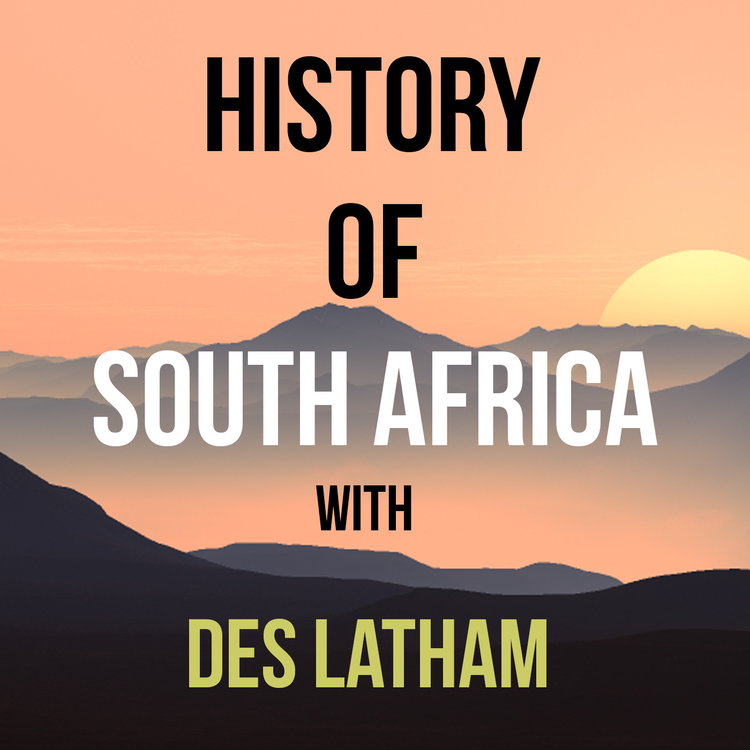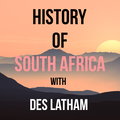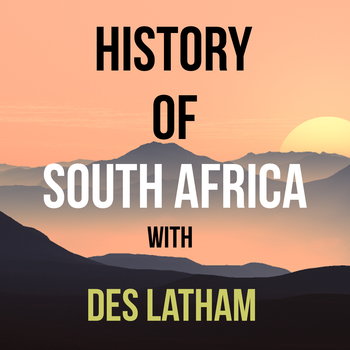
Episode 136 - The place of weeping earns its name and the“Grand Army of Natal” marches off
Loading player...
This is episode 136 — the Zulu army has fallen on the Voortrekkers along the Bloukrans and Bushman’s rivers, close to where Escourt and Ladysmith are to be found today, but right now it’s February 17th 1838. The tributaries of these rivers were renamed Groot and Klein Moordspruit because of the bloody events of that time.
By the morning of the 17th most of the families camped along these streams and rivers were dead.
Within a few hours the right horn and the centre sections of the army had overrun the outlying Voortrekker camps, now the left horn prepared to assault Gerrit Maritz’s laager.
The Zulu army on the left flank initially approached the Viljoen camp, and Gert and Karel Viljoen, Gert Combrink, Izak Bezuidenhout, Meneer Schutte and Strydom, rode out to confront the attackers in an attempt to protect their families. Acting like plovers, the decoys split up in full view of the Zulu warriors, Gert and Izak riding towards the Bezuidenhout camp, and the others towards Englebrecht and Bothma camp.
They were looting anything of value as they went, and as I mentioned at the end of last episode, their discipline was slipping. The left horn now rounded on Gerrt Maritz’s laager, which was heavily defended unlike the other trekker camps, and he threw back the first attack. Many narratives of the future were being created about this defence, campfire stories of stoic action, including one where Martiz’s ten year old son armed himself with a pistol and fired on the Zulu while his mother and other women carried ammunition back and forth while still in their dressing gowns.
The Boers gathered back at Doornkop and revenge was on their lips. The sounds of weeping filled the air and for the next few days, outlying trekkers staggered towards this safe centre.
The Voortrekkers had lost more than 600 of their people. IT was the biggest calamity to befall any of the settler parties by a long way — a significant event in the story of South Africa. The place where the main massacres took place is marked today by the town of Weenen, Place of Weeping.
110 trekker men had died, including the 60 at kwaMatiwane, 56 women were dead, but shockingly it was the number of children wiped out — 185 that really was an abomination and embittered the Boers. The AmaZulu did not fight like the amaXhosa they realised too late. For centuries they’d lived alongside the Xhosa, sometimes within their kraals, and never had they witnessed such cold blooded killing of infants and women.
Then there were 250 coloured and Khoesan servants also speared to death by the Zulu — everywhere gore splattered the landscape — the Boers had lost one tenth of their population, and one-sixth of their men.
The Zulu had killed everyone and everything, cats, dogs, even the chickens.
However, in making a surprise attack, Dingana and his advisors had totally underestimated the Trekker’s fighting spirit and their grit, even when facing odds of 30 or 40 to one. They had discovered that even when at a disadvantage, the Boers provided a sting.
So it was with some irony that the first to respond to the Zulu attack on the Voortrekkers were the English who rode out from Durban.
By the morning of the 17th most of the families camped along these streams and rivers were dead.
Within a few hours the right horn and the centre sections of the army had overrun the outlying Voortrekker camps, now the left horn prepared to assault Gerrit Maritz’s laager.
The Zulu army on the left flank initially approached the Viljoen camp, and Gert and Karel Viljoen, Gert Combrink, Izak Bezuidenhout, Meneer Schutte and Strydom, rode out to confront the attackers in an attempt to protect their families. Acting like plovers, the decoys split up in full view of the Zulu warriors, Gert and Izak riding towards the Bezuidenhout camp, and the others towards Englebrecht and Bothma camp.
They were looting anything of value as they went, and as I mentioned at the end of last episode, their discipline was slipping. The left horn now rounded on Gerrt Maritz’s laager, which was heavily defended unlike the other trekker camps, and he threw back the first attack. Many narratives of the future were being created about this defence, campfire stories of stoic action, including one where Martiz’s ten year old son armed himself with a pistol and fired on the Zulu while his mother and other women carried ammunition back and forth while still in their dressing gowns.
The Boers gathered back at Doornkop and revenge was on their lips. The sounds of weeping filled the air and for the next few days, outlying trekkers staggered towards this safe centre.
The Voortrekkers had lost more than 600 of their people. IT was the biggest calamity to befall any of the settler parties by a long way — a significant event in the story of South Africa. The place where the main massacres took place is marked today by the town of Weenen, Place of Weeping.
110 trekker men had died, including the 60 at kwaMatiwane, 56 women were dead, but shockingly it was the number of children wiped out — 185 that really was an abomination and embittered the Boers. The AmaZulu did not fight like the amaXhosa they realised too late. For centuries they’d lived alongside the Xhosa, sometimes within their kraals, and never had they witnessed such cold blooded killing of infants and women.
Then there were 250 coloured and Khoesan servants also speared to death by the Zulu — everywhere gore splattered the landscape — the Boers had lost one tenth of their population, and one-sixth of their men.
The Zulu had killed everyone and everything, cats, dogs, even the chickens.
However, in making a surprise attack, Dingana and his advisors had totally underestimated the Trekker’s fighting spirit and their grit, even when facing odds of 30 or 40 to one. They had discovered that even when at a disadvantage, the Boers provided a sting.
So it was with some irony that the first to respond to the Zulu attack on the Voortrekkers were the English who rode out from Durban.

